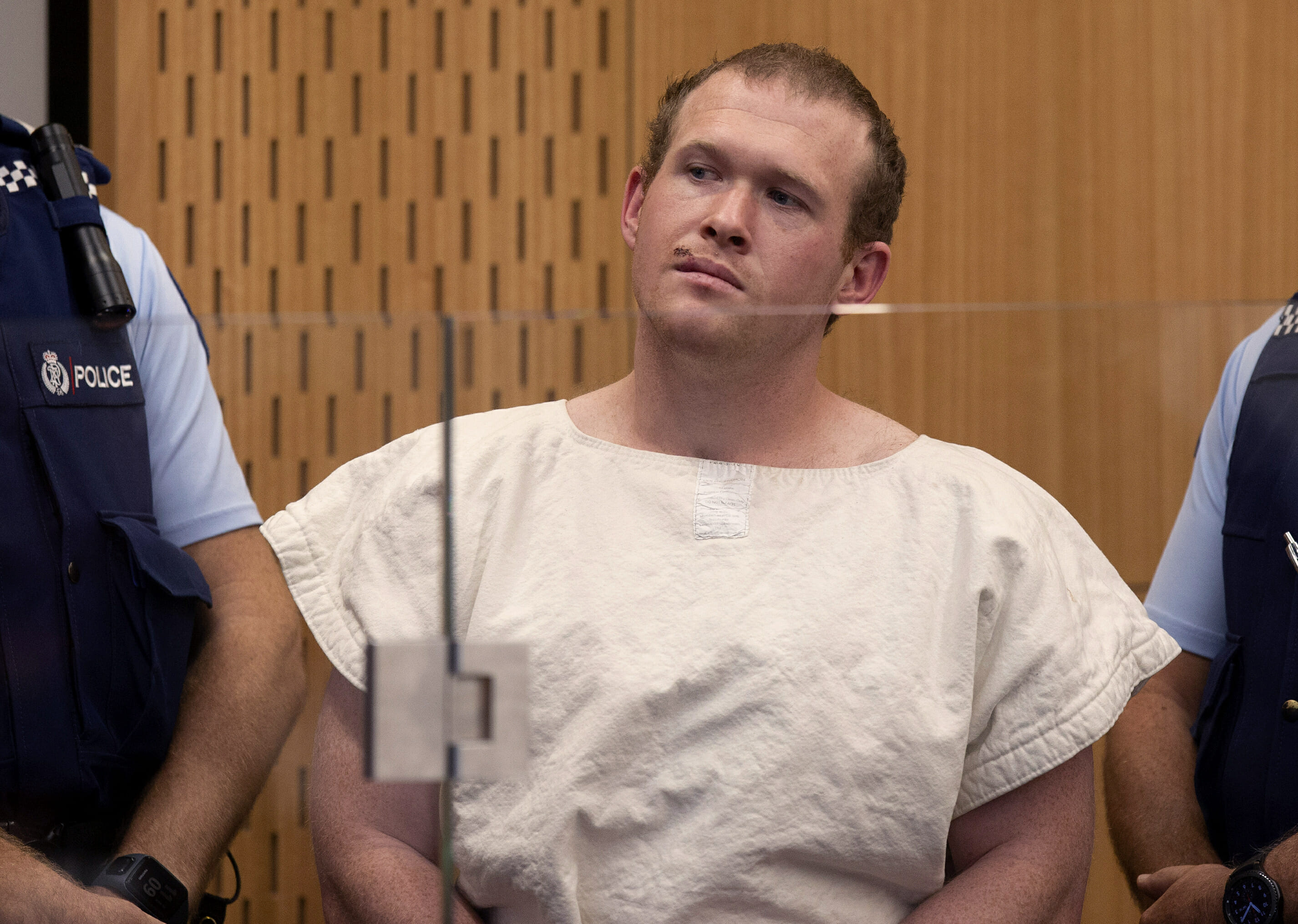
NZ judge allows images of man charged in mosque shootings
WELLINGTON, New Zealand (AP) — A New Zealand judge ruled Thursday that media outlets can now show the face of the man accused of killing 51 people at two Christchurch mosques.
Two New Zealand courts had previously ruled that television stations, websites, newspapers and other media could only publish images which pixelated the face of Brenton Harrison Tarrant, the 28-year-old Australian white supremacist accused of the March 15 mass shooting.
But High Court Judge Cameron Mander wrote in a court note that prosecutors had advised him there was no longer any need to suppress images of Tarrant’s face and he was lifting the order.
The previous rulings hadn’t stopped images of Tarrant from circulating on the internet, and questions remained about whether the court’s rulings could be applied to media operating outside of New Zealand’s borders.
Prosecutors and defense lawyers, who have not commented on the case publicly, did not immediately return calls from The Associated Press seeking comment on Thursday.
Retired law professor Bill Hodge said the initial argument for suppressing images of Tarrant was likely made to ensure witnesses weren’t tainted — that they could identify the gunman from their own recollection and not from seeing a picture in a newspaper.
“I can only assume that neither side is concerned about poisoning the well of identification witnesses,” Hodge said.
Tarrant livestreamed much of his attack on Facebook. The chilling 17-minute video, in which he shows his face, was copied and widely viewed on the internet even as tech companies scrambled to remove it.
New Zealand’s Prime Minister Jacinda Ardern has vowed never to say the gunman’s name, and last month helped lead a global pledge named the “Christchurch Call,” aimed at boosting efforts to keep internet platforms from being used to spread hate, organize extremist groups and broadcast attacks.
The White House did not endorse the pledge, citing respect for “freedom of expression and freedom of the press.”
Hodge said Ardern and other politicians might be making a nice gesture by trying to avoid giving Tarrant the publicity he’s likely seeking. But Hodge said that’s been somewhat undermined after police decided last month to add a terrorism charge against Tarrant to the charges of murder and attempted murder he already faced.
Hodge said the terrorism charge had never been previously tested in New Zealand’s court system and it could backfire by giving Tarrant a platform to broadcast his white supremacist views, since defending himself against that charge could give him more scope to express his alleged motives.
A spokesperson for Ardern said the prime minister had no comment to make on a matter for the court.
Tarrant is next scheduled to appear in court via videolink on June 14, when he is expected to enter pleas to 51 counts of murder, 40 counts of attempted murder and one count of terrorism.
The Western Journal has not reviewed this Associated Press story prior to publication. Therefore, it may contain editorial bias or may in some other way not meet our normal editorial standards. It is provided to our readers as a service from The Western Journal.
Truth and Accuracy
We are committed to truth and accuracy in all of our journalism. Read our editorial standards.
Advertise with The Western Journal and reach millions of highly engaged readers, while supporting our work. Advertise Today.












